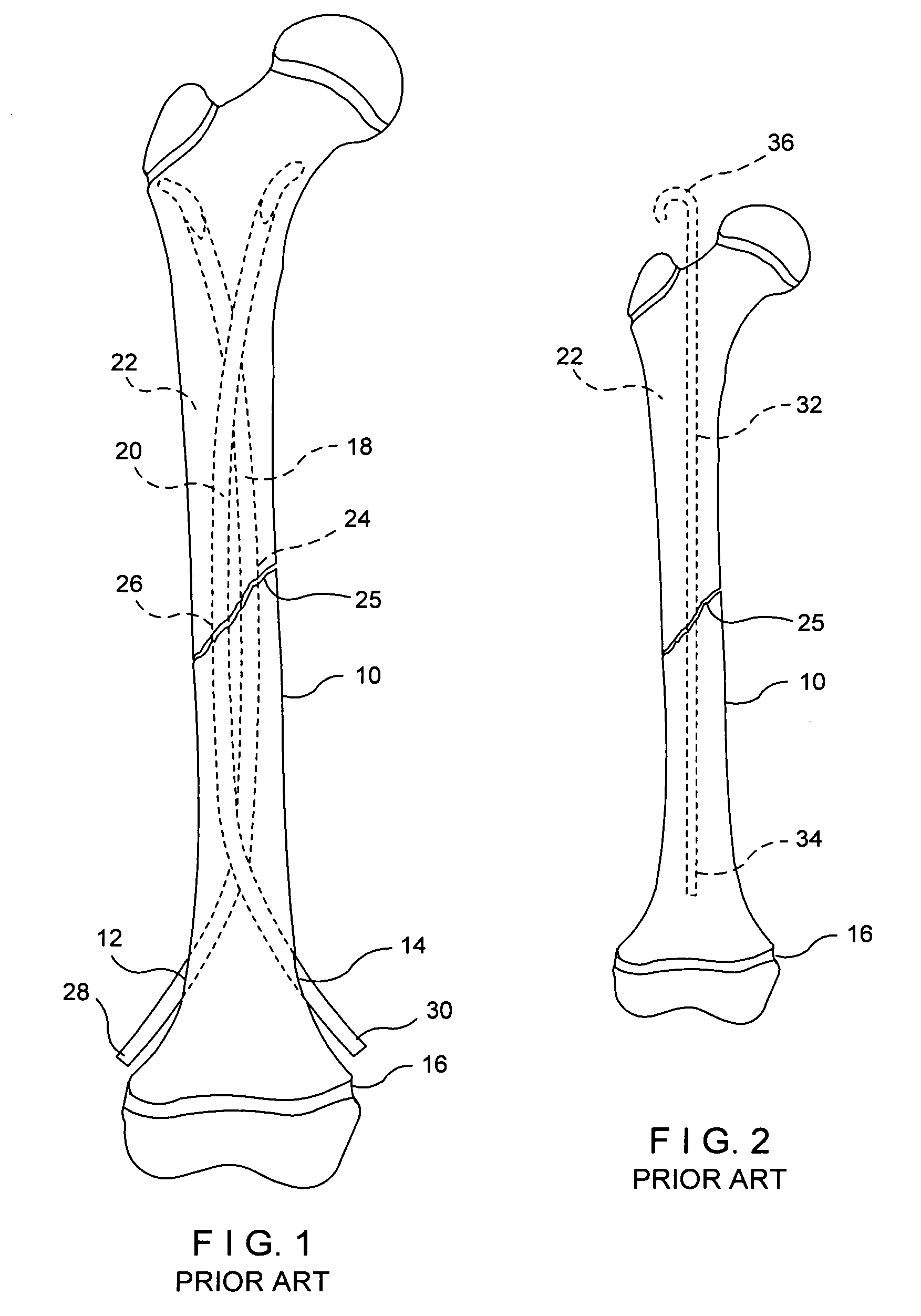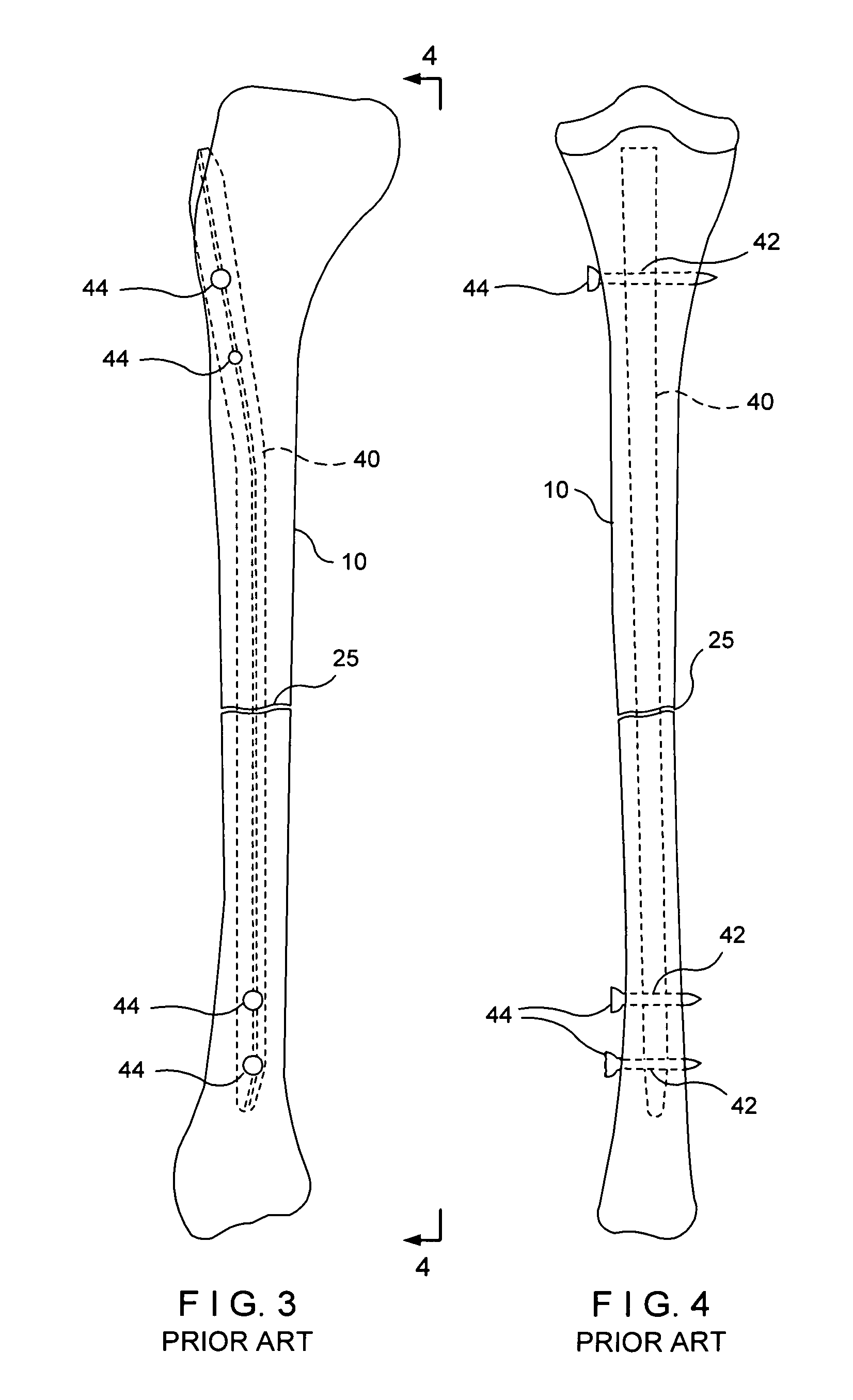System for intramedullary rod fixation and method therefor
a technology of intramedullary rods and fixation methods, which is applied in the field of intramedullary rod systems for stabilizing bone segments, can solve the problems of reducing blood supply, affecting the healing time of the bone itself, and affecting the healing effect of the bone itsel
- Summary
- Abstract
- Description
- Claims
- Application Information
AI Technical Summary
Benefits of technology
Problems solved by technology
Method used
Image
Examples
Embodiment Construction
[0031]Referring to the drawings, and to FIG. 5 in particular, an intramedullary nailing system 100 in accordance with an exemplary embodiment of the present invention for affixing and / or mobilizing two or more separated bone segments, such as segments 114, 116, and 118, of a bone structure 106 is illustrated. The system 100 preferably includes an intramedullary nail or rod 102 (shown in hidden line) that is adapted to extend into the medullary canal 104 (also shown in hidden line) of the bone structure 106 with one or more fractures 108, 110 and a screw assembly 112 that anchors the rod 102 within the medullary canal to secure the bone segments together during the treatment process.
[0032]The system 100 of the present invention is especially suitable in pediatric orthopedics for fixation of fractured bones such as the tibia, femur and humerus, complications caused by osteogenesis imperfecta, pseudoarthrosis of the tibia, and so on. However, it will be understood that the present inve...
PUM
 Login to View More
Login to View More Abstract
Description
Claims
Application Information
 Login to View More
Login to View More - R&D
- Intellectual Property
- Life Sciences
- Materials
- Tech Scout
- Unparalleled Data Quality
- Higher Quality Content
- 60% Fewer Hallucinations
Browse by: Latest US Patents, China's latest patents, Technical Efficacy Thesaurus, Application Domain, Technology Topic, Popular Technical Reports.
© 2025 PatSnap. All rights reserved.Legal|Privacy policy|Modern Slavery Act Transparency Statement|Sitemap|About US| Contact US: help@patsnap.com



